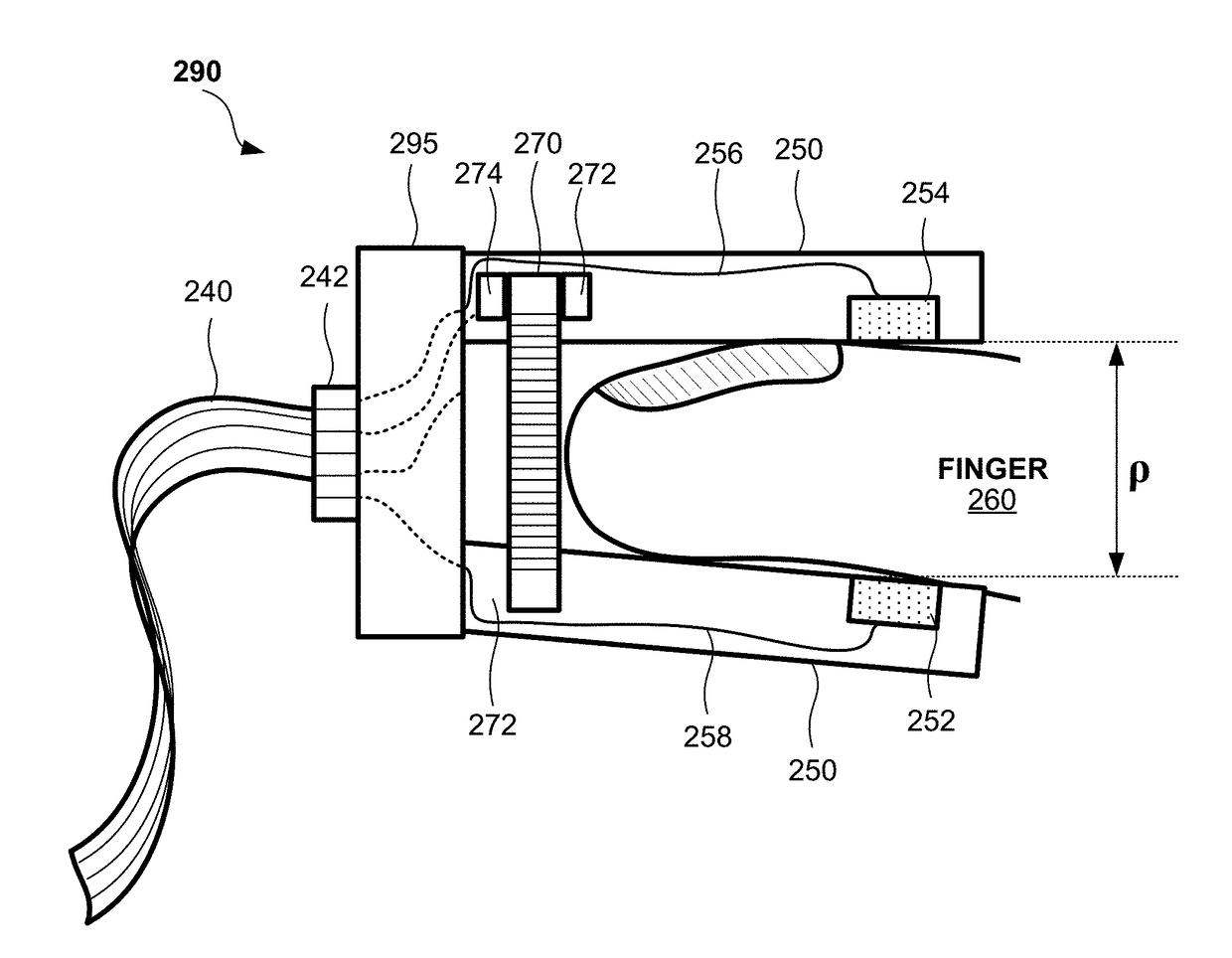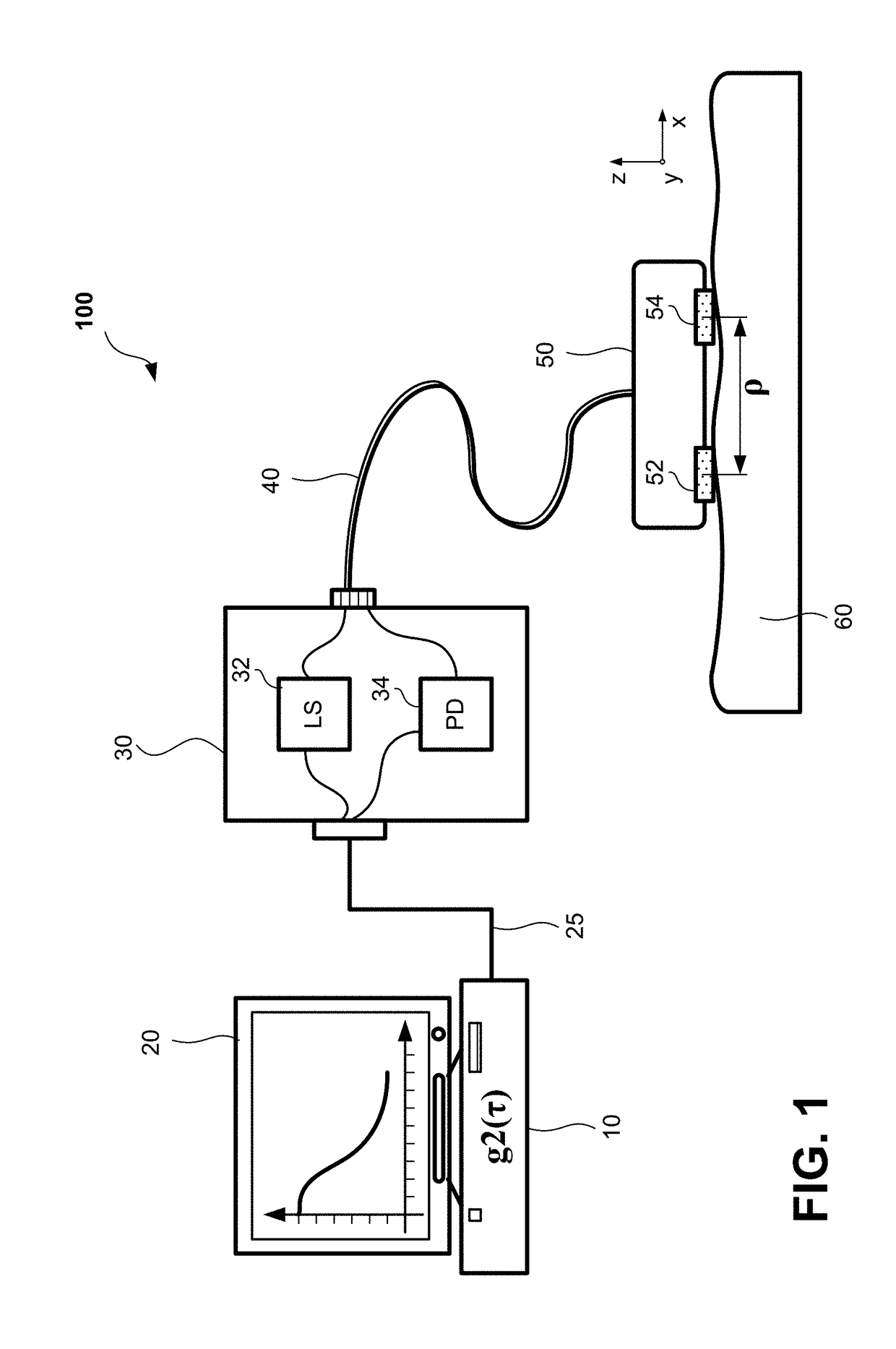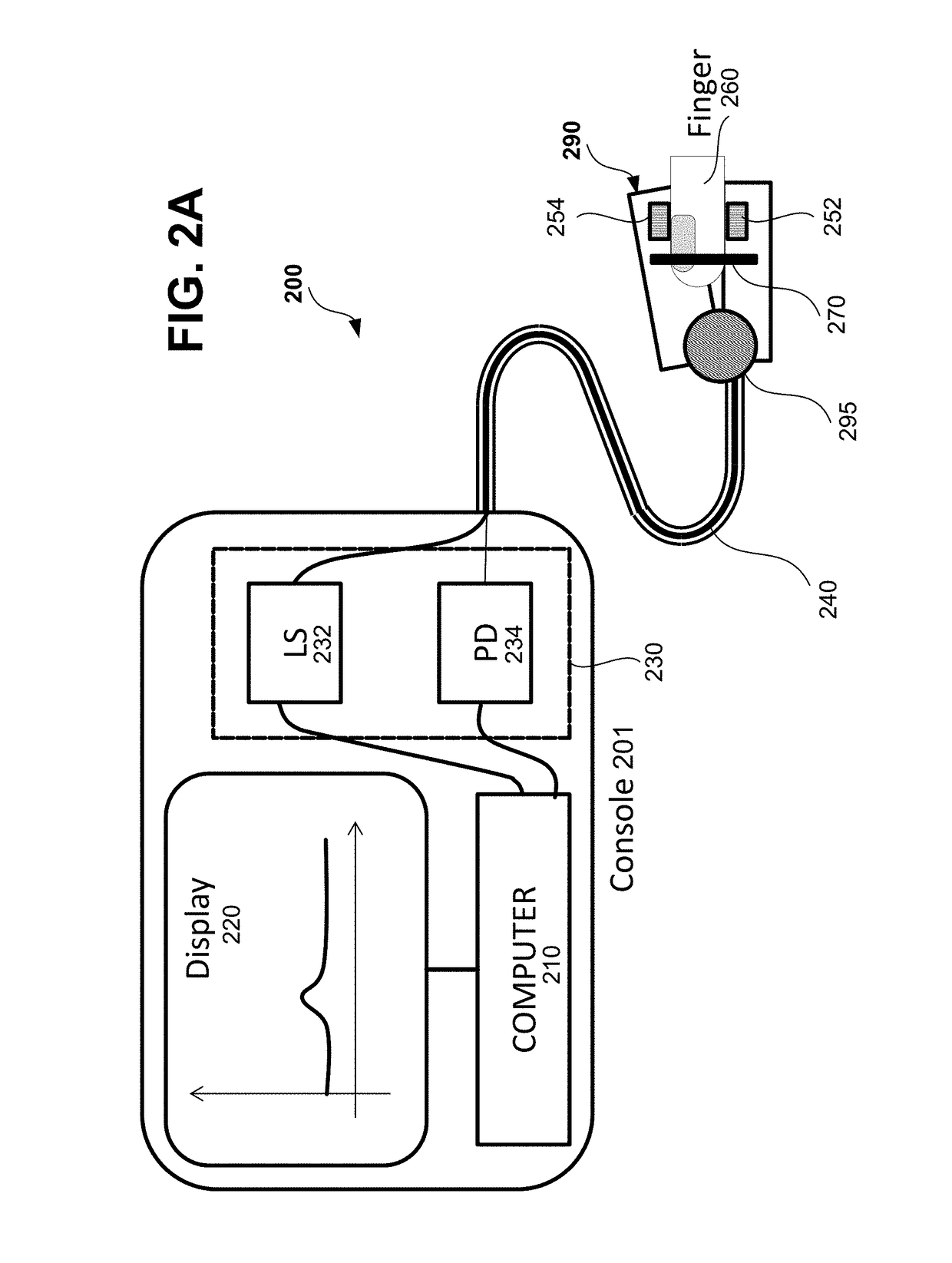Diffusing wave spectroscopy apparatus and control method therefor
a wave spectroscopy and apparatus technology, applied in the field of optical imaging, can solve the problems of difficult to accurately apply the probe to the surface of a patient, the probe may not remain stable for long-term measurements, and the rigid flat probe may not accurately conform to the non-flat surface of other anatomies of patients, so as to improve the accuracy of source-detector distance information and improve the dws measurement results.
- Summary
- Abstract
- Description
- Claims
- Application Information
AI Technical Summary
Benefits of technology
Problems solved by technology
Method used
Image
Examples
first embodiment
[0037]FIG. 2A illustrates a diffusing wave spectroscopy (DWS) apparatus according to one embodiment of the present patent application. In FIG. 2A, a DWS apparatus 200 includes a DWS probe 290 connected to an operating console 201 via a cable / fiber bundle 240. The operating console 201 is constituted of known DWS controlling parts including a computer 210, a display 220 and a light control module 230. The light control module 230 includes a laser light source (LS) 232 and a photodiode (PD) (photodetector 234) similar to the above-describe light source 32 and photodetector 34 of FIG. 1. The DWS probe 290 is illustrated as a finger clamp composed of a pair of clamp plates joined by a mechanical hinge portion 295 and configured to receive therein a finger 260 (an anatomical extremity). The DWS probe 290 includes a source 252, a detector 254, and an optical encoder 270 which serves to obtain source-detector distance, as described below more in detail.
[0038]FIG. 2B illustrates a configura...
second embodiment
[0069]FIGS. 5A1-5A2 and 5B1-5B2 show examples of a DWS probe having integrated therein one or more linear encoders. FIG. 5A1 shows a probe 500 in the form of a finger clamp (clamping unit) in a closed state in which a linear encoder 502 has been integrated into the probe. FIG. 5A2 shows the probe 500 with a single encoder in an open state. FIG. 5B1 shows a probe 510 also in the form of a finger clamp (clamping unit) in an open state in which a first linear encoder 511 and a second linear encoder 512 have been integrated into the probe. FIG. 5B2 shows the probe 510 with multiple encoders in an open state.
[0070]In FIG. 5A1, the probe 500 includes a pair of clamp plates 504, a hinge portion 508, and a linear encoder 502 with a curved scale 502a. The probe 500 is similar to the above described probe 290 in that probe 500 includes a pair of clamp plates 504 that are mechanically joined by the hinge portion 508. The clamp plates 504 each include a notched section to form a sample receivin...
PUM
 Login to View More
Login to View More Abstract
Description
Claims
Application Information
 Login to View More
Login to View More - R&D
- Intellectual Property
- Life Sciences
- Materials
- Tech Scout
- Unparalleled Data Quality
- Higher Quality Content
- 60% Fewer Hallucinations
Browse by: Latest US Patents, China's latest patents, Technical Efficacy Thesaurus, Application Domain, Technology Topic, Popular Technical Reports.
© 2025 PatSnap. All rights reserved.Legal|Privacy policy|Modern Slavery Act Transparency Statement|Sitemap|About US| Contact US: help@patsnap.com



